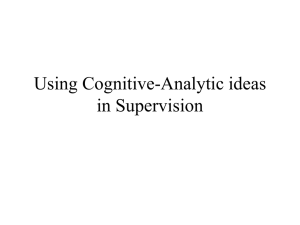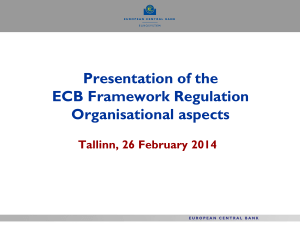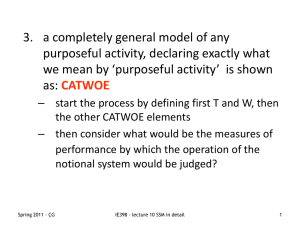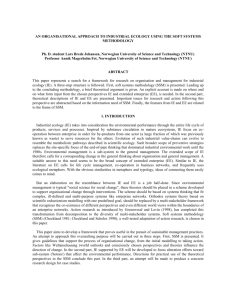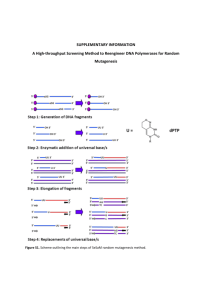SSM: Key Success Factors - European Banking Federation
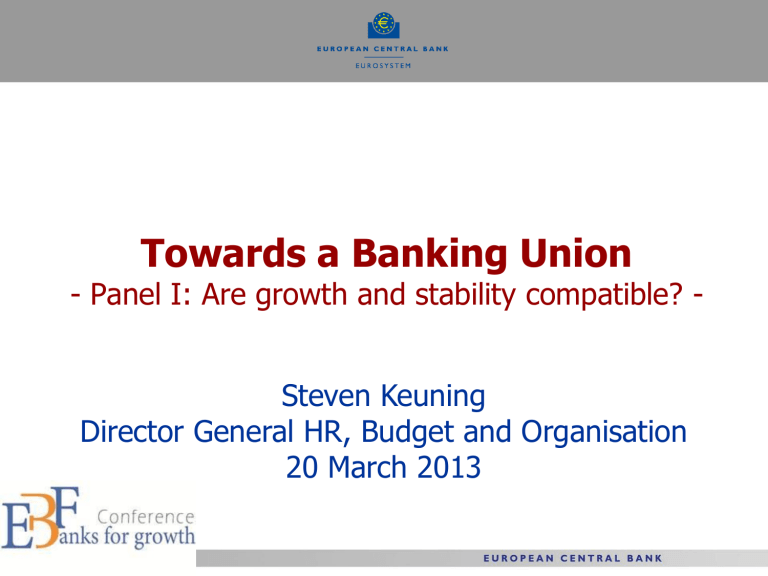
Towards a Banking Union
- Panel I: Are growth and stability compatible? -
Steven Keuning
Director General HR, Budget and Organisation
20 March 2013
Outline
1. Relevant to EU/EMU: compatibility of growth, financial stability… and financial integration
2. Supervisory lessons from the financial crisis
3. Rationale for Single Supervisory Mechanism (SSM)
4. State-of-play to establish the SSM
5. SSM: Guiding Principles
6. SSM: Key Success Factors
7. SSM: Challenges & Opportunities
8. (SSM)
2
Relevant to EU/EMU: compatibility of growth, financial stability … and financial integration
Financial integration implies:
• Cheaper and easier cross-border payments
• Larger variety of financial products available at lower cost
(loans) or higher remuneration (e.g. internet deposit accounts)
• More buyers and sellers on larger financial markets
• Enhanced transmission of monetary policy decisions
• Yet: possibly also more cross-country distress contagion and larger impact of excessive risk-taking strengthening
European supervision
3
Supervisory lessons from the financial crisis
• Willingness to act in a timely and adequately strict fashion
• Need to test resilience to (truly) adverse stress test scenarios
• Need for independent supervision , avoiding local ‘capture’
• Stronger risk-based capital and liquidity requirements
• More focus on verification and monitoring of compliance with best risk management and internal control practices
• Cross-border dimension is crucial
• Minimisation of home-host conflicts of interest (in a crisis)
• Harmonisation of risk and asset quality assessment
• Stronger interplay between micro- and macro-prudential supervision (early macro-warnings, spotting contagion risks)
4
Rationale for Single Supervisory Mechanism
Single Supervisory Mechanism (SSM) essential to:
• Promote sustainable growth through financial integration while containing financial instability (e.g. cross-border contagion)
• Improve EMU functioning : smooth monetary policy transmission and functioning of money markets; containing imbalances
• Help breaking negative feedback loops between governments and banks (together with the Single Resolution Mechanism)
• Remove any national bias of national supervisory authorities
• Converge to the best (of the national) supervisory practices
• Substantially reduce the supervisory ‘burden’ for cross-border banks
(through the Single SSM Supervisory Manual )
• Reduce (crisis) coordination failures among national supervisors
• Promote reinforced coordination by European Banking Authority
5
State-of-play to establish the SSM
• 13 December 2012: ECOFIN Agreement on SSM Regulation
• Trilogue with the European Parliament (including the EBA regulation) expected to be concluded in a few weeks
• Adoption of the SSM Regulation by the Council and Parliament in early summer, with a possible publication and entry into force in the course of July
• ECB decisions on SSM (organisation, staffing, location, recruitment) only after entry into force of SSM Regulation; preparation started
• SSM begins supervision one year after entry into force
6
SSM: Guiding Principles
• Effective single supervisory authority within the ECB (including macro-prudential powers, legal competence for all credit institutions)
• Independent and accountable
• Separation between ECB’s supervision and monetary policy responsibilities (e.g. decision-making by Supervisory Board)
• Establishment as a System , with participation of National
Competent Authorities (NCAs), and not a ‘college’ of NCAs
• Leverage NCAs expertise (convergence towards the best national practices, ECB to directly supervise only (about 140) systemic banks)
• Financing by supervised entities (level playing field across SSM)
7
SSM: Key Success Factors
• Ensure full and smooth cooperation between ECB and NCAs ( Joint supervisory teams; strong horizontal functions)
• Homogeneous approach to risk and asset quality assessment and supervisory requirements (e.g. Single SSM Supervisory Manual, reporting )
• Strong on- and off-site supervision
• Effective workflow management and well-functioning IT -systems
• Smooth management of the transition period
8
SSM: Challenges & Opportunities
• Time (only 18 months to set up SSM versus 4 years to set up ECB)
• All SSM institutions’ alignment towards a truly European system , with effective reporting lines and commitment of resources
• Utilise national experience and skills, while developing the ECB’s horizontal and specialised expertise (e.g. risks’ assessment)
• Unlike monetary policy, there is no well-defined single overall objective ; more visibility of ECB towards national public opinion
• Reap synergies between ECB’s ‘central banking’ functions (analytical capacity) and its macro- and micro-prudential supervision tasks
• Staff recruitment , (regular) relocation (language issues?), training
• A smooth, yet rapid transition (continuity without entrenching national approaches; balance sheet assessment)
• Unified supervision needs a common resolution mechanism
9
Towards a Banking Union
- Panel I: Are growth and stability compatible? -
Steven Keuning
Director General HR, Budget and Organisation
20 March 2013



